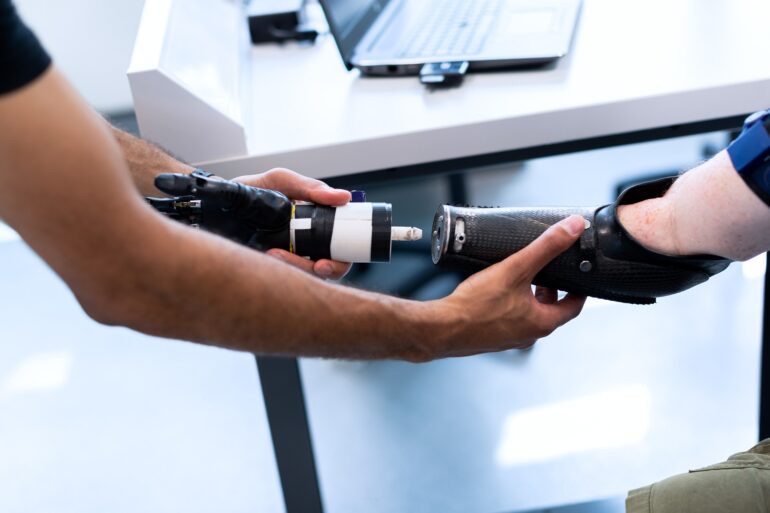TL;DR:
- The Open Muscle project aims to revolutionize prosthetic technologies using artificial intelligence (AI) to predict muscle contractions.
- It utilizes a machine-learning prosthetic sensor suite with 12 pressure sensors on a bracelet for feature data and a LASK system with piston springs for finger movement label data.
- The project’s goal is to provide free hardware and software resources for biometric machine learning datasets that include feature and label data.
- ChatGPT, specifically the GPT-4 model, played a significant role in selecting the right library for the project, ultimately choosing Scikit-Learn based on its feedback.
Main AI News:
This video explores the groundbreaking Open Muscle project, which aims to revolutionize prosthetic technologies through the power of artificial intelligence (AI). Open Muscle utilizes AI to predict muscle contractions, enhancing the functionality of prosthetic limbs. The project features the Open Muscle machine learning prosthetic sensor suite, which incorporates 12 pressure sensors on a bracelet to gather essential feature data. Additionally, it utilizes the LASK system, consisting of piston springs, to capture finger movement label data.
The primary objective of the Open Muscle project is to provide free hardware and software resources for creating biometric machine-learning datasets that encompass both feature and label data. This innovative approach allows researchers and developers to access the necessary tools to advance prosthetic technologies.
ChatGPT, specifically the GPT-4 model, played a pivotal role in the project by assisting in the identification of the most suitable library. Through its analysis and feedback, ChatGPT recommended Scikit-Learn as the optimal choice for the Open Muscle project. This collaboration showcases the potential of AI in guiding decision-making and technology selection, leading to significant advancements in the field of prosthetics.
Conlcusion:
The advancements brought forth by the Open Muscle project and the integration of artificial intelligence (AI) into prosthetic technologies have significant implications for the market. By harnessing AI to predict muscle contractions, the project opens up new possibilities for enhanced functionality and usability of prosthetic limbs. This breakthrough technology, coupled with the provision of free hardware and software resources for biometric machine learning datasets, fosters innovation and collaboration in the market.
Moreover, the role of ChatGPT in identifying the right library showcases the value of AI-driven decision-making in selecting the most suitable tools for development. Overall, these developments pave the way for a transformative market landscape, offering individuals with limb loss greater mobility, improved quality of life, and expanded opportunities.

